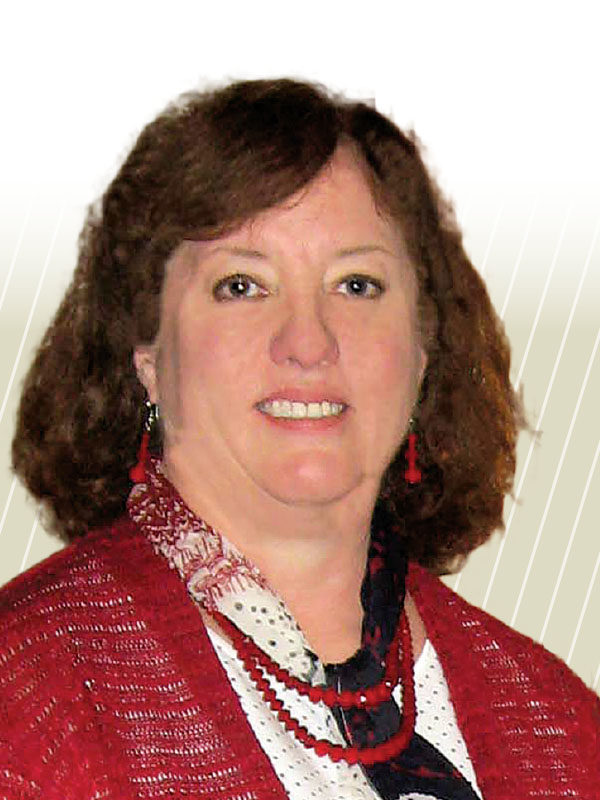The secret to Pamela Elliott Cain’s success is to not provide all the right answers. It’s to ask the right questions.
“I try to be a facilitator,” explains the associate vice president and university secretary, Iowa State University of Science and Technology, Ames. “I try not to offer suggestions unless absolutely necessary. Instead, I work out compromises by asking the right questions so other people can provide the solutions.”
As part of a succession plan, Cain came to Iowa State in 2007, after almost 12 years as the CBO of the Board of Regents, which governs Iowa’s three universities.
What functions do you now supervise?
I would prefer to say I provide guidance, rather than supervision. My direct reports are the controller’s office, the business operations for benefits and compliance office, and the trademark office. In dealing with our continued growth in student enrollment, I coordinate the financing of many capital projects that include various departments on campus. I also have ongoing discussions with bond rating agencies, with a focus on improving the university’s credit ratings. In addition, I represent the university on business and finance division matters that relate to strategic and institutional issues, and serve as the lead on major projects.
Such as?
We had a massive flood in 2010 that impacted 95 buildings, green space, parking lots, and other structures. As the lead, I coordinated with facilities, environmental health and safety, purchasing, risk management, and other major units—such as the dormitory system and athletics—to restore the campus.
What caused the flood?
After almost 40 days of continuous rain, we experienced another 15 inches in three days. That’s when two rivers rose over their banks. The water was up and back down within just 24 hours, but it left behind a real mess.
This was a massive flood that did substantial damage to nearly 100 buildings, some of which were in the flood plain. For us, that meant dealing with multiple layers of insurances. We had three levels of deductibles depending on the type of building. Trying to figure out a financial strategy that would maximize our recovery has been complex but rewarding.
We have a facilities data system on campus where we identify all of our facility costs, taking into account the costs of labor, benefits, and supplies within each unit. Since our insurance would pay 100 percent of our charged rate and FEMA would pay only about 60 percent, I had to come up with a strategy to ensure we weren’t shortchanged by FEMA on the insurance recovery.
How many staff members report to you?
Three units report directly to me, but I feel I ultimately have responsibility for all of the staff in business and finance, which has about 800 full-time and 400 part-time employees.

Do you serve in any other leadership capacities outside of the university?
I am the current board chair for the Ames Chamber of Commerce, and work with many of its committees.
What is your dream job?
My goal when I left high school and went to college was to become a chief business officer for a large corporate entity. I achieved that at the Board of Regents, but I’ve got to tell you that my move to Iowa State has been very rewarding. Walking through the campus on a daily basis and seeing the fresh, young faces of students has added a whole new dimension to my job. There’s constant activity. Being on a college campus is now my dream job. It never gets old.
Why a CBO? Were your parents in finance?
No, my dad was a salesman and my mother was a stay-at-home mom who let me work on the family budget and pay bills. I loved it. I was the middle of five kids and the only one interested in finance.
You once developed a presentation on women leaders in higher education. Please explain.
From my perspective and experience, I think women have to knowingly establish their roles.
For example, women can say the same things; they can do the same things as men may do, but their actions or comments are often perceived differently.
As a result, women need to be very conscious of their environment, the big picture, their skills and knowledge, and how they position themselves.
What’s the most important professional lesson you have learned?
To listen objectively, gather as much information as possible, and try to assist others in solving their problems—not solve the problems for them.
Looking back over your career, what one thing would you like to do differently?
I would have loved to get my MBA, but life happened instead. I became a single mother when my boys were two and three. I got remarried 10 years ago to a wonderful man—my siblings call him Saint Ron—who has three kids along with their spouses and nine grandchildren. We were successful in blending our families together. We all get along and do lots of things together.
If you could choose another profession, what would it be?
I’ve been lucky. I’ve had the opportunity to experience many different roles in my life. Professionally, I’ve been a monitor, teacher, mentor, policy wonk, consultant, planner, designer, counselor, and enforcer. At home, I’ve been a mother, caretaker, landscaper, and builder.
A builder? That might need some explanation.
My husband Ron, a union carpenter, and I built our home, which is a sprawling ranch with 3,000 square feet per floor. My husband laid and dug it all out, scheduled the work, and did all the carpentry, including the wood foundation, hardwood floors, doors, trim, and five decks. We hired framers, electricians, and roofers.
What was your role?
I’m the best rock raker in the world. I raked eight inches of river rock, which went under the wood foundation of our house. There were some cold days when I couldn’t put enough clothes on. I learned how to match wood types for framing around the doors and to operate a skid steer because, with seven acres, we had to move a lot of dirt.
I also did all the landscaping. Given that it’s Iowa, I chose plants hardy enough to survive our winters. In the summer, I have 20 pots filled with annuals, plus a walking path with dianthus, daffodils, daylilies, black-eyed Susans, coreopsis, and spirea. One garden is a mix of bush roses and ever-blooming lilacs that bloom from spring to fall. The back of our house has oak and walnut trees that are probably 150 years old and a ravine with a creek.
How long did this take?
We started construction in August 2008, moved into the home in September 2009, and finished three months later. This is not the Taj Mahal. It’s a house in the country that is a relaxing place to be.
How do you unwind from the pressures of the job?
I dig in the dirt, but my husband does all the practical stuff. He’s got a huge garden with asparagus, tomatoes, peppers, broccoli, and celery; he also has an orchard with apples, pears, blueberries, and raspberries.
My favorite way to fix dinner is to go out and pick items from our garden.
MARGO VANOVER PORTER, Locust Grove, Va., covers higher education business issues for Business Officer.



